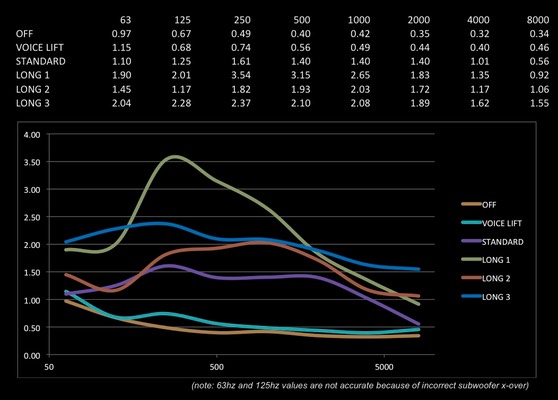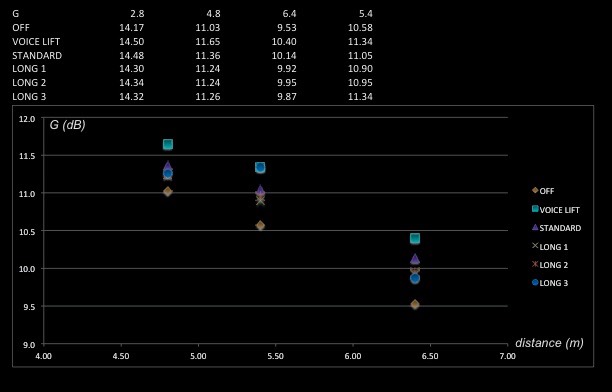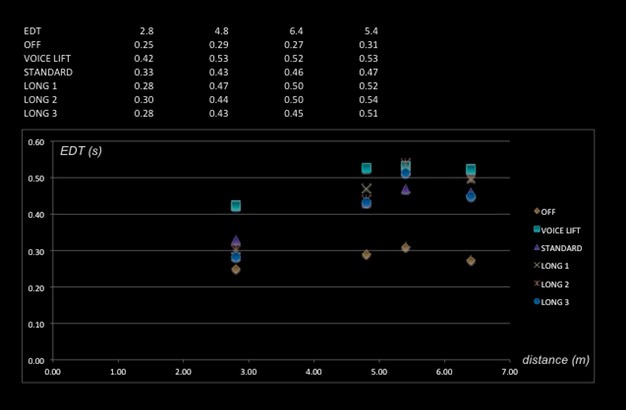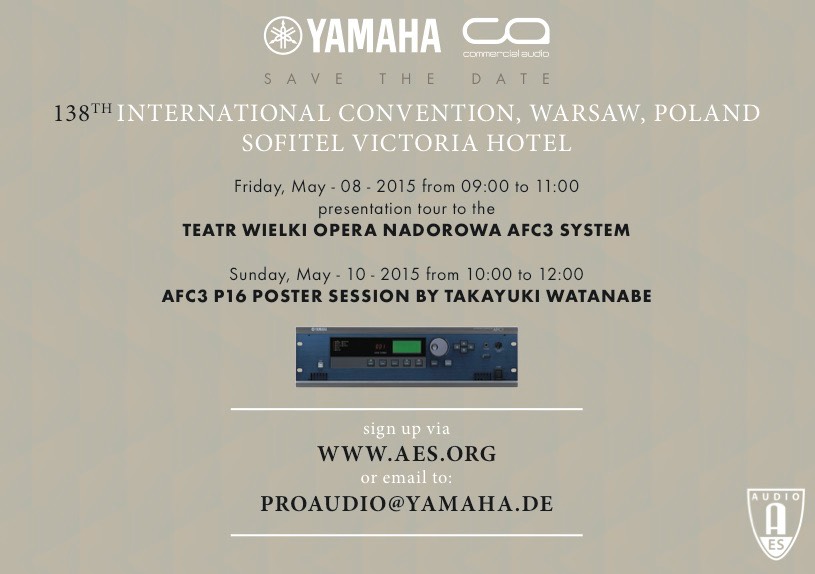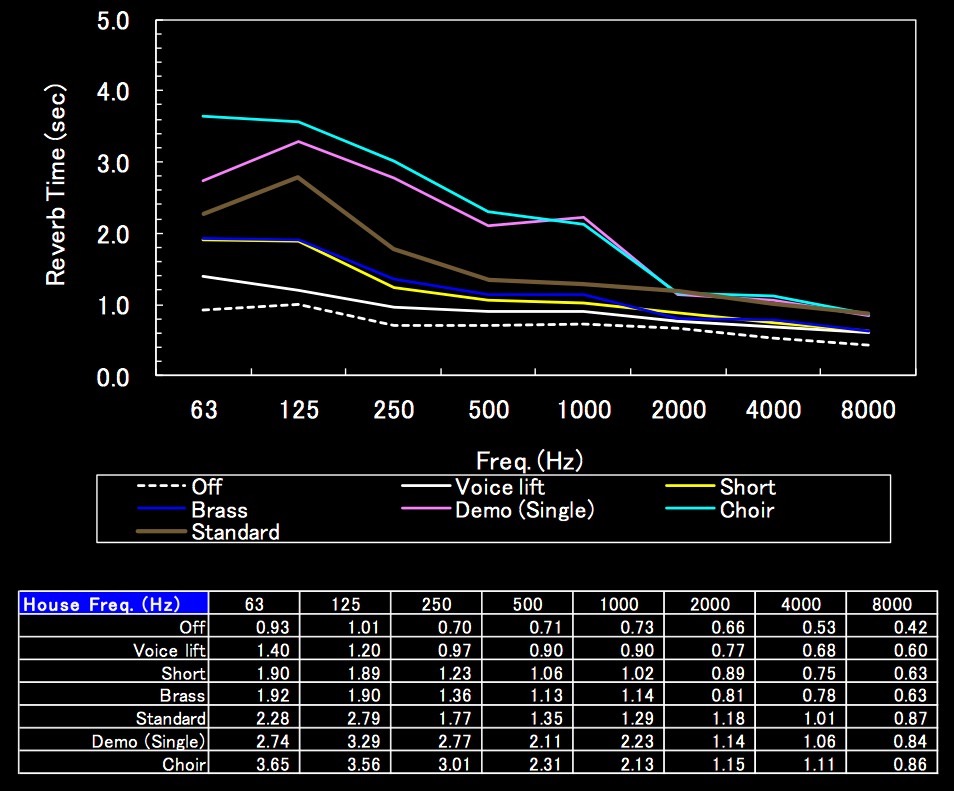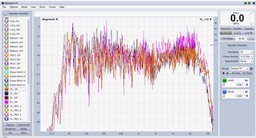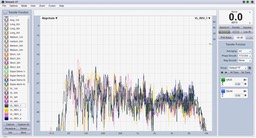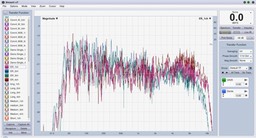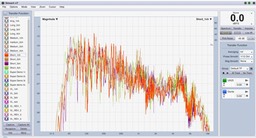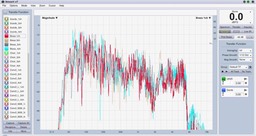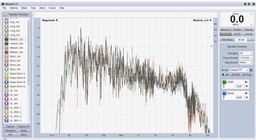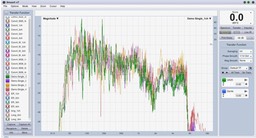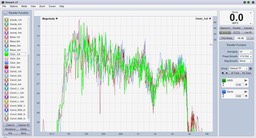AFC3 system
Active Field Control is an acoustic enhancement system that is used to improve or enhance the architectural acoustic characteristics of a room and optimize reverberation while preserving that room's natural acoustic ‘signature’. Yamaha DSP technology enables us to realize this system with a small set of core devices.
AFC adjusts acoustical conditions by using an acoustical feedback system which makes AFC different from, and superior to, other techniques that are based on the use of digital reverbs to simulate room characteristics.
With increasing pressure for facilities to become more multi-purpose and accommodate a wider range of applications AFC3 provides a cost-effective alternative to mechanical means of modifying room acoustics. A truly scalable solution which can be installed in a wide range of venues AFC3 makes it possible to hold classical concerts in a very large hall without a sound reinforcement system, to accommodate an organ in a small church, or to enhance crowd response in a stadium. Reverberation changes can be made at the push of a button, allowing the performance environment to be adjusted almost instantly. In addition AFC3 is able to deliver the same high-quality sonic experience to every performer and member of the audience.
Yamaha AFC systems are currently installed in over 80 facilities in the U.S. and Japan, and now with the release of AFC3, a much wider range of facilities worldwide will now have access to the best acoustic enhancement system available today.
Riksteatret Oslo
AFC3 Brings Audiences And Actors Together At Riksteatret
Established in 1949, Riksteatret is Norway’s national touring theatre. The organisation’s headquarters is in Oslo’s Nydalen district, where a Yamaha AFC3 system has recently been installed to help overcome the dry acoustic of its main performance space.
"Riksteatret, Norway’s national touring theatre, had a very “dry” acoustic. The reverb was only 0,26 sec. The actors felt as if they had a quilt over their head when they spoke. This did not create a good working environment for them.
Riksteatret saw two alternatives to solve this situation. Rebuilding was one option or they could opt for an electroacoustic solution. The latter was by far the cheapest.
For that reason Riksteatret announced a request for tenders, and Yamaha AFC3 was chosen after the evaluation process.
The theatre is very pleased with the result. Actors, musicians and technicians are very happy, and they especially appreciate the adjustable acoustic. The AFC3 is in use 24/7, and the acoustic feels natural. Even with PA system in use.»
Lars Årdal
Fagsjef Lyd Riksteatret
INFO
An offshoot of the Norwegian government's Ministry of Culture, Riksteatret stages shows in 70 venues around Norway, its mission being to ensure that nobody has to travel for more than an hour to one of its productions. Productions are developed and previewed in two venues at the Nydalen complex, the 300-seat Store Gull (Large Gold) and 120-seat Lille Gull (Little Gold).
Formerly a television studio, Store Gull had a very dry acoustic response, the reverb time being as little as 0.56s. This resulted in a rather uncomfortable experience for both actors and audiences - the actors feeling disconnected from the audience, while audience members felt uncertain as to when to clap or laugh.
Ellen Horn, Riksteatret's artistic director, wanted to improve the situation and, together with head of the sound Lars Aardal, looked at various solutions.
“They saw two alternatives - either rebuilding or an electroacoustic system. The latter was by far the cheapest and the least disruptive,” says Jo Wang, acoustic engineer at Panpot Acoustic Systems AS. “They visited the Gäddviken Rehearsal Hall, the rehearsal facility for Stockholm's Royal Opera, where a Yamaha AFC3 system was installed last year. Having heard it in use, they were convinced that AFC3 was the answer.”
Approved Yamaha AFC tuning partner Panpot has been installing active room acoustics systems since 2005 and, after a formal tender and evaluation process, the company was invited to install an AFC3 system in the Store Gull space.
AFC3 works by processing the audio captured by carefully-positioned ambient microphones and ‘recycling' it through loudspeakers, which has the effect of increasing the audible reverb times, making an acoustically dry space sound more natural. A key advantage offered by AFC3 is that different settings can be saved as presets, meaning that a previously challenging space can now offer a huge range of instantly-recallable acoustic possibilities.
Working in close collaboration with Yamaha's Takayuki Watanabe and Ron Bakker, Panpot installed three AFC3 processors, with five Yamaha XMV8140 and one XMV4140 power amplifiers. These drive 50 loudspeakers - 24 ceiling speakers and four flat panel speakers at the mixing desk position for reverb, plus 18 wall units and four subs for early reflection, reverb and 7:1 surround.
The system was programmed with seven presets, which accommodate a range of different performances, both acoustic and amplified.
“In room acoustics we often talk about the importance of the ‘acoustic connection' between artist and audience. The stage and audience area must be in the same acoustic environment for a good live experience,” says Jo.
“The AFC3 system has transformed Store Gull. It makes the acoustics feel incredibly natural, even with the PA in use. It has created both early and reverberant energy in both the stage and audience areas, uniting the venue into one acoustic sphere. Riksteatret is very pleased with the result. Actors, musicians and technicians are all very happy.”
“AFC3 has turned the theatre into a intimate space, which is acoustically comfortable for both performers and audience,” adds Roy Knudsen, Panpot engineer. “Everybody is really happy about the functionality and the natural sound of the system. As well as coping well with amplified sound, they have also used the system in a play which used only acoustic instruments and were thrilled about the definition, clarity and distribution of the instruments in the auditorium.”
As well as improving the acoustics of the space itself, the AFC3 system's adjustable parameters allow the Riksteatret team to simulate how performances will sound in the other venues around Norway that the productions play in."They really appreciate the adjustable acoustics," confirms Jo.
And it's not only during performances that AFC3 has radically changed Store Gull for the better.
“An interesting psychoacoustic effect we have noticed is that when the audience is entering, they are talking and have a far more relaxed and natural ‘feeling' amongst them than they did before. This of course has a very positive effect on the actors and staff,” says Riksteatret head of the sound Lars Aardal. “It has become a space where actors and audience are always closely connected.
Storstua Lørenskog Hus
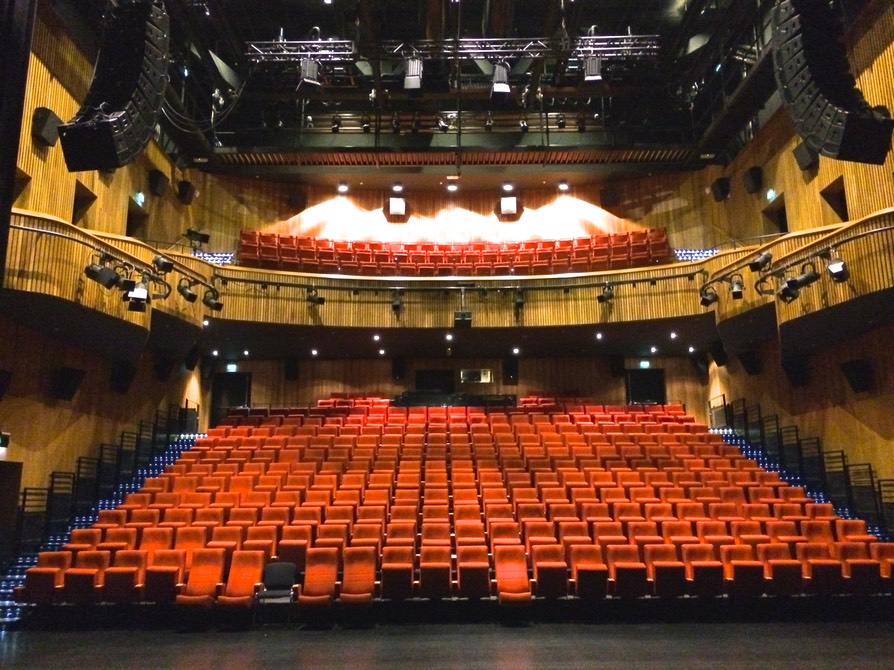
A true multi-purpose hall
Even the most modern venues can suffer from acoustic issues, but with Yamaha’s AFC3 acoustic enhancement system, virtually all can be overcome. Lørenskog Hus has employed it to transform its main auditorium into an acoustically enhanced space.
7 presets
| Preset | RT | Beskrivelse |
|---|---|---|
| 1. System OFF | 0.7 | AFC system er avslått |
| 2. Voice Lift | 0.9 | Tale / Seminar |
| 3. Short | 1.1 | Piano solo |
| 4. Brass | 1.1 | For Storband / Korps |
| 5. Medium | 1.4 | |
| 6. Kor | 1.8 - 2.2 | Kor |
| 7. Demo | 2 - 4 | Demo |
"When Lørenskog hus was built, the goal was to make the room acoustics In our main hall flexible enough for all genres of music (choir, marching bands, symphony and pop concerts..). Unfortunately, we ended up with a very dry room that gave the musicians on the stage very little feedback/help but a very good room for amplified music. So we knew that we needed to find a solution for the acoustic musicians, without ruining the good qualities that the room had for amplified music. We quickly found that an electroacoustic system was not only the best solution for us, but also the most cost efficient!
The system was installed in January, and is in use every day without any problems. The feedback from the musicians has been very good. They now feel less tired after rehearsals and concerts. They feel that they get good help from the “room” and that it feels natural.
The system covers all our requirements, it sounds natural, it`s stable, covers the stage and audience area and is very easy to use.»
Kristoffer Engen
Technical manager at Lørenskog hus
INFO
Opened three years ago, Lørenskog Hus is a multi-purpose municipal venue located 20 minutes from Oslo. Covering 15,000sqm over eight floors, it features five auditoriums, four cinema screens, seven meeting rooms, a restaurant and a library. Providing a focal point for the regional community, it stages a wide variety of live productions and hosts conferences, corporate and cultural events, as well as showing films and other activities.
“When the venue was built, the goal was to make the acoustics in our main auditorium flexible enough for all genres of music – everything from choirs, marching bands and symphony orchestras to pop, rock and rap,” said Kristoffer Engen, technical manager at Lørenskog Hus. “The problem was that we ended up with a very dry room, which was very good for amplified music, but which gave musicians onstage during unamplified performances very little acoustic return.
“We knew that we needed to find a solution for the acoustic musicians, without ruining the excellent qualities that the room has for amplified music. We quickly found that an electroacoustic system was not only the best solution for us, but also the most cost efficient.”
Yamaha AFC3 was the chosen solution, with the system installed and commissioned by Panpot Acoustic Systems, a company which has made electronic acoustic enhancement systems its core business.
“Although we have used other systems, it was not until we listened to AFC3 that we knew we had a system that could match our very high quality demands,” said Jo Wang, Panpot tuning engineer.
“The fact that AFC3 is a hybrid-regenerative system makes it act as a truly integrated part of the room acoustics, not just as an electronic reverb effect. The audience and the performers are in the same reverberant space and the room reacts just as much to the audience applause as to the performing artists. The communication and connection between the stage and the auditorium is enhanced both ways.”
The Lørenskog Hus installation features four different zones:
The stage shell, which helps performers communicate better between each other on stage;
The reverberation system in the auditorium, which makes the performers feel that they are connecting with the audience. It also makes the audience aware of themselves as a part of the same acoustic environment as the artist;
The under-balcony zone, acoustically connecting this area to the rest of the auditorium;
An early reflection zone to maintain speech intelligibility and the ‘attack’ in music when bringing more reverb into the room. This part of the system is tuned exceptionally finely to work seamlessly with the speakers on stage and in the auditorium.
“Installing a lot of loudspeakers and microphones within the proscenium often conflicts with other equipment such as lightning, trusses and moving stage technology. There are also many different kinds of set decorations that may affect the performance of this kind of system,” said Roy Knudsen, Panpot tuning engineer, who worked with Wang on the project.
“We are very impressed by the fact that the EMR and FIR processing in AFC3 provides us a lot of extra headroom in the loop gain, without needing to have a lot of microphones spread throughout the venue.
“The Lørenskog Hus system only needed four microphones within the proscenium, plus four more in the auditorium. This made it a lot easier to find suitable locations for the microphones and we have found AFC3 to be impressively consistent, even when moving or taking away stage sets and so on.”
Installed in January, the AFC3 system has been in use every day, transforming the acoustics of the venue.
“The system fulfils all our requirements. It sounds natural, it`s very stable and is very easy to use,” said Engen. “The comments from the musicians have been very positive. They feel that they get good ‘help’ from the room and that it feels natural. They also now feel less tired after rehearsals and concerts.”
Fohhn Sound Lab
In July 2015 Panpot tuned a AFC3 system to work simultaneously together with an IOSONO 3 d sound system at the Fohhn Sound Lab in Nurtingen, Germany.
The Fohhn Soundlab is a relatively anechoic ‘dry’ space measuring 30m x 15m x 6m, used by the German loudspeaker manufacturer Fohhn to conduct electro-acoustic tests. But the Soundlab is also used as the home of two of the most advanced sound systems in the world: the IOSONO Immersive Sound system by Barco, and the Yamaha AFC3 Acoustic Field Control system, utilizing a Fohhn fixed-installed 3D loudspeaker system.

The Fohhn 3D loudspeaker system features 18 LX10 ceiling speakers, 24 LX100 side column speakers and 4 AS40 subwoofers. All speakers are individually driven by 12 Fohhn D4750DSP power amplifiers, receiving 46 audio channels through MADI using two D.O.TEC Andiamo 32 channel MADI D/A converters.
The IOSONO Immersive Sound system is a powerful SSF (Synthesis of Sound Field) system, capable of creating audio events in a 3-dimensional space using wave field synthesis rendered in real time by the IOSONO ICP100 audio proces- sor. 3D mixes can be produced using IOSONO workspace software, or by the IOSONO plug-in software Spatial Audio Workstation (SAW) exclusively for the Digital Audio Workstation Steinberg’s Nuendo. With a full production setup (Nuen- do, SAW) the system is ready for mixing 3D soundfields, also many sound examples and complete demos are available for playback in the SoundLab system.
The Yamaha AFC3 system is the latest generation of ASF (Assistance of Sound Field) system, capable of enhancing the acoustic response of a space in real time using microphones and loudspeakers. AFC3 is a hybrid regenerative system, offering acoustic enhancement responding to sound sources anywhere in the room, using high density convolution tech- niques to generate a natural acoustic response - even in the relatively dry acoustic environment of the Fohhn Soundlab.
The IOSONO system is connected to a Yamaha RMio64-D MADI/DANTE bridge, converting the MADI stream to a Dan- te network connecting to the AFC3 system. The AFC3 DSP frames have a 48 channel mixing matrix built in to merge the IOSONO channels with the AFC3 channels before transmitting them through the MADI stream to the amplifier rack. Because both systems can be used simultaniously, pre-produced 3D rendering can be combined with real time acoustic enhancement to create true immersive and interactive 3D audio experiences. Because both systems use the same net- worked audio infrastructure and electro-acoustic components, systems can be offered at a very cost-efficient level.
Measuerments : (RT, EDT & G) and report (pdf)
